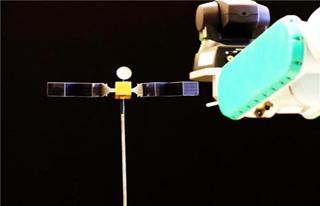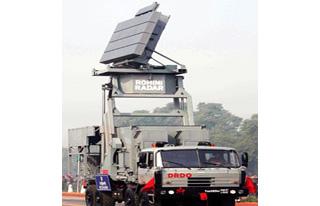
The prototype ASIROV. Photo: Universidad Carlos III de Madrid.
MADRID (BNS): Scientists at the Universidad Carlos III de Madrid (UC3M) have recently developed a new type of automated satellite docking and capture system, which allows robots to autonomously trap target spacecrafts.
The initiative is called “Docking and Capture of Satellites through computer vision,” or ASIROV for short, according to a UC3M news release.
Within this framework, the scientists have developed algorithms and strategies to dock and capture a disabled satellite through the use of a space vehicle, called a “chaser”, which autonomously carries out this function.
"By using this methodology, we attempt to carry out all the phases of a satellite inspection and maintenance mission with another autonomous vehicle equipped with a robotic system for capture and control," Mohamed Abderrahim, head of this research study, UC3M Department of Automated Systems Engineering, in the release.
The university itself is not directly involved with the manufacture or launching of the rescue satellites, experts say. Their involvement deals exclusively with developing the intricate algorithms needed.
These navigation algorithms, based on vision techniques, are capable of indentifying the objects of the search among various objects present, estimating their position and orientation.
The scientists, while doing the research, have constructed a small bank of tests which allow them to simulate a scenario of this kind. They first designed vision algorithms which employ satellite model vertices as characteristic points. Then, they perfected the technique to design a new vision algorithm that uses the information about the texture around the points of interest of the image to associate them with the points in the model.
"The latter technique is quite robust against noise, changes in the background and variations in illumination," added Abderrahim.
He also stated that, "today there is a growing need to provide satellite maintenance services, without relying on manned missions, which are very costly and involve risks. Robotics is the natural solution."
Currently, the researchers are in contact with the Spanish company, SENER, as they explore paths for collaboration to implement this idea, with the aim of extending the working life of communication satellites to up to twelve years of service in space.
 Next Article
Next Article













The Indian Air Force, in its flight trials evaluation report submitted before the Defence Ministry l..
view articleAn insight into the Medium Multi-Role Combat Aircraft competition...
view articleSky enthusiasts can now spot the International Space Station (ISS) commanded by Indian-American astr..
view article